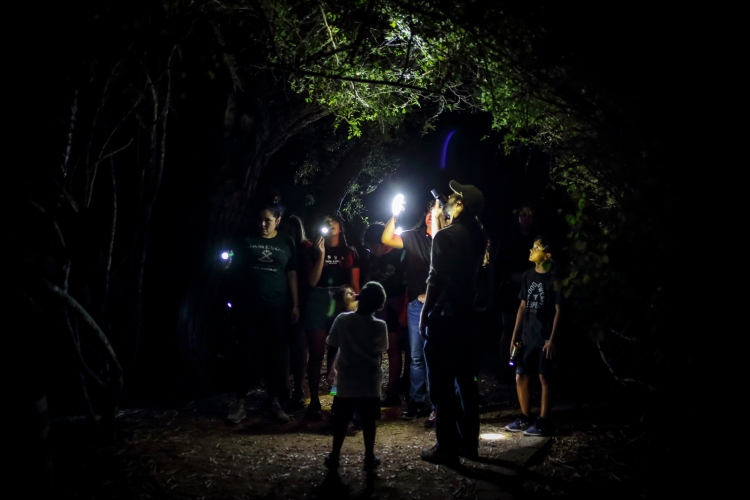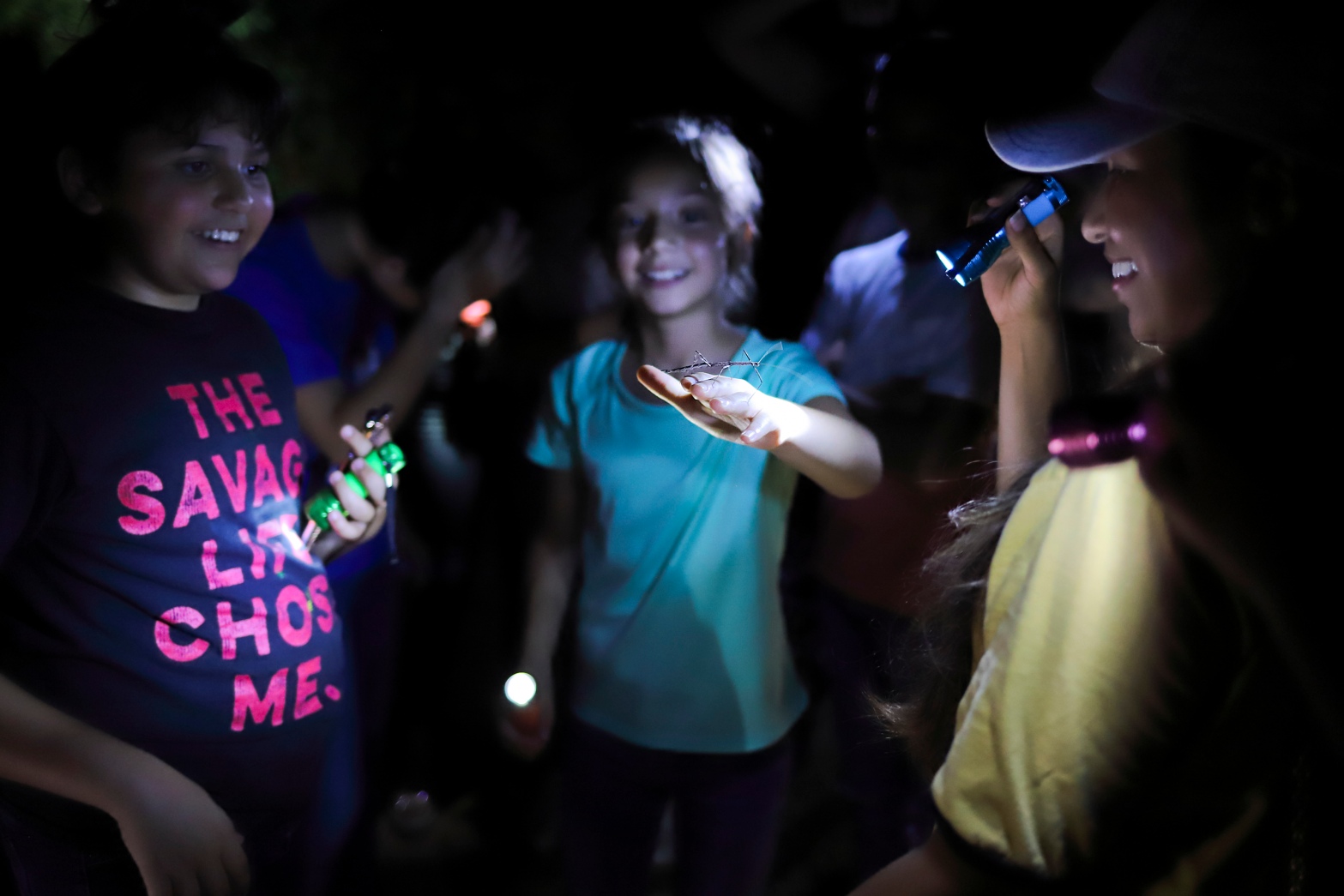By John Brush, Urban Ecologist, City of McAllen
It’s a typical summer day. High humidity quickly swelters the morning hours, and by mid-afternoon its vital to be inside, or at least in the shade of a mesquite or Texas ebony tree. Everything feels sunbaked; even the blue sky pale and worn in the summer sun. Yet, despite the lull in activity, life still abounds. Some organisms, like birds, still make their way over shimmering streets. Flowers bloom, insects buzzing between them. But many others wait for the cooler nighttime temperatures: cottontail rabbits splay out in freshly dug dirt; spiders hide under curled leaves; scorpions shelter under bark, logs, or stones.
There is a noticeable difference in animal activity from the hot afternoons to after dark in the evenings, especially in the summer. Despite being more hidden from our diurnal eyes, our ecosystems are just as active (if not more so) at night than during summer days.
In fact, that’s the theme for 2024’s edition of Flashlight Nights at Quinta Mazatlan. During the after-dark guided tours, guests will be introduced to our nighttime ecosystem, including a variety of examples of how and why nocturnal wildlife are adapted to the dark, all while exploring the nature center’s thornforest trails and gardens.
Avoiding heat is a main factor for nocturnal behavior of animals, but there are other reasons too. Another reason is to avoid other wildlife. For example, urban ecologists have found that many animals that live in cities are becoming more and more nocturnal as a way to avoid humans. It’s also thought that nocturnality in mammals originally came about to avoid conflicts with dinosaurs.

One recurring trait of nocturnal animals is the tapetum lucidum, found in the eyes of many nocturnal vertebrates, that reflects light back through the eyes as a way of gathering more light (ultimately helping them see better). Nocturnal animals also tend to have more rod than cone photoreceptors; rods better at night vision, cones better for color vision.
Other nocturnal traits include the use of other senses, like sound and smell, to help animals find their way through the dark. A common example is echolocation in bats, using high-pitched squeaks to locate their prey. Oddly enough, one of their common prey items – moths – will use ultrasonic sounds to scare off approaching bats. Moths also use their antennae to chemically sense mates, sometimes over vast distances.
Not only is Flashlight Nights meant to be a cooler way for guests to enjoy the sights and sounds of Quinta Mazatlan, but it also highlights how important the “creepy-crawlies” of the night are for healthy ecosystems. Whether they are providing pollination services or free pest control, animals like insects and spiders and snakes are vital to our local food webs. By respecting and conserving those organisms, people are benefitting too.

Lastly, there are ways that we can better co-exist with these animals. One large-scale issue that impacts nocturnal animals is artificial light at night – the streetlights, house lights, and other lights that keep our cities illuminated. Light pollution negatively impacts pollinators, can be detrimental to firefly populations, and can increase the chances of warblers and other songbirds dying on their journeys. By limiting how many lights we use, directing lights to illuminate the ground (not pointing up and out into the environment), and using warmer colored lights, we can help protect our local wildlife.
Learn more about our nocturnal wildlife during Flashlight Nights, offered Tuesdays from June through August, at Quinta Mazatlan. The program runs from 8:30 to 10:00 PM. Space is limited, so registration is required. Visit quintamazatlan.ticketleap.com to reserve your spots, and follow Quinta Mazatlan on social media for up-to-date information on all the nature center’s programming.


